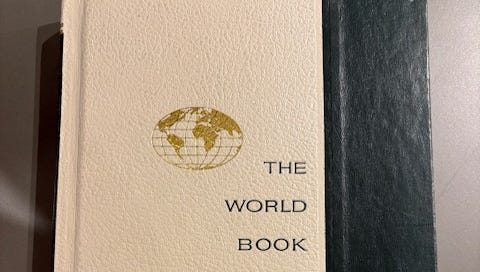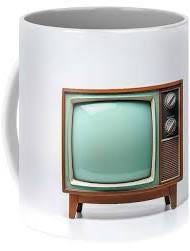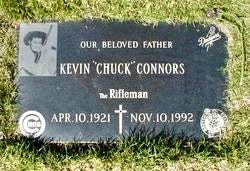Sure I’m biased but I also know I’m right.
Not privy to the generations before us, but having seen every one that followed, growing up as a Boomer in the 1950s and 60s was really the best of times.
For fun we innocently flipped baseball cards, tossed Frisbees, played ringolevio, rocked the baby with our Duncans, watched our Slinky’s walk down the staircase, waited impatiently for the ice cream truck and held our transistor radios to our ears to hear the latest rock ‘n roll from the British Invasion. Extra-long cords on telephones were revolutionary. Our moms could talk with their moms or Joan or Gloria from the neighborhood as they cooked dinner. Life-changing invention. Televisions that had color and getting our first Etch-A-Sketch were exciting. We even read newspapers, magazines and books before they all but disappeared four decades later. And if we needed to research anything we relied on an encyclopedia. Either World Book or Britannica. And annually we received the year book supplements recapping the previous year. Everything we ever wanted to know was in that green and white volume. It was the way we were.
And our television options were so different and so simple from the mass media chaos that exists today. In metro New York we had seven stations: three network affiliates, three great independents and our public television station, then called National Educational Television, later changed to PBS. Almost all the then NET programming was way over our adolescent heads until 1969 when Sesame Street debuted. We didn’t know about computers and video games. Yes, life was easy for us; we made our own fun in our free time. Today’s kids, and those from the last couple of decades, have everything room service on voice activated devices, a couple hundred television stations, streaming, social media and the internet. Boredom can’t be a part of their lexicon. When things got slow for us we were perfectly content playing solitaire with a deck of 51.
As a kid I loved watching television. Television never defined who we were or what we would become. Instead, it was fantasy land, the way it was intended. Today, if I’m scrolling MeTV or TVLand and I come across Superman, Abbott and Costello or The Honeymooners, the scanning stops. I know every episode but still they never get old. I still can’t believe Paul Barton was so naive and tried to come out of the cube he’d been in for seven years when Superman tricked him five minutes before his freedom; or Ralph and Norton are going bowling, but they’re really not going bowling, instead camped on the balcony spying on Andre from Morgan’s Department Store. And will Bud and Lou ever have enough money to pay Mr. Fields the back rent they’ve owed forever? That was our Netflix. It was the way we were.
A few years ago, during some Covid downtime, I did an SMC on some things we may not have known about our favorite old-time television shows. Let’s do it again, but first prop up our portable TV tables and take the Swanson’s out of the oven. It has to be in the oven because microwaves didn’t exist in our prehistoric era. The perfect dinner has the tin foil dangerously hot. Peel it back to the turkey, stuffing, gravy, peas ‘n carrots and those to-die-for mashed potatoes. Life was so good.
Three Stooges (1922-70, 190 TV shorts): Shemp Howard was replaced by his younger brother Curly in 1932 when Shemp left the act to go solo. Curly was 29. Older brother Moe and Larry Fine were constants throughout the Stooges entire run. Shemp was the first to use the trademarked eye-poke, for real, when he accused Larry of cheating in a card game. Curly, nicknamed Babe, was a dog lover. He fostered close to 5,000 dogs while trying to find them furever homes. Curly’s contract with Columbia Pictures allowed him to have two dogs on the set during filming. When Curly suffered a debilitating stroke in 1946, Shemp returned until his death from a heart attack in 1955. Joe Besser and Joe DeRita followed but never could maintain that Stooges momentum.
I Love Lucy (1951-57, 180 shows): Philip Morris tobacco was the show’s major sponsor. All four of the main characters: Lucy, Ricky, Fred and Ethel smoked during filming —contractually Philip Morris required them to smoke the PM brand. Lucy was not a fan of their cigarettes and instead smoked Chesterfields. She was busted by a PM executive during the show’s first season. Told she had to smoke PMs, she instead took a Philip Morris branded pack, replaced them with Chesterfields, and filmed for six more seasons with nobody the wiser. William Frawley playing Fred Mertz, was a drunk. When he asked Desi Arnaz for the part, Arnaz told him if ever came to the set drinking or smelling of alcohol he was done. He kept his word and never did. However, all bets were off when Frawley took the role of Bub O’Casey on My Three Sons in 1960. He was back on the booze and many a day through his three-year run on the show he had to be revived with black coffee to shoot his scenes. And the irony is Frawley died in 1966 at 79 outliving Lucy (77), Ricky (69) and his Lucy stage wife, Vivian Vance, who passed at 70.
The Rifleman (1958-63, 168 episodes): Prior to becoming Lucas McCain in 1958, Chuck Connors was an outstanding athlete. He played basketball and baseball at Seton Hall, leaving after two years to sign a professional baseball contract. He was a left-handed first baseman — had a cup of coffee with the Brooklyn Dodgers in 1949 and played half a season with the Cubs in 1951. For his career he had 202 plate appearances, batting .238 with two home runs and 18 RBI. At 6’5”, he also played in the NBA: 53 games for the Celtics during the 1946-47 and 1947-48 seasons. He averaged 4.5 points a game. Connors also holds the distinction in 1946 of being the first professional basketball player to break a backboard. Somehow he did it with a shot. Talk about tossing up a brick. A lifetime devoted Dodgers fan, he played a key role in 1966 as an intermediary between Sandy Koufax, Don Drysdale and the Dodgers in helping to settle a contract dispute. He died in 1992 at age 71 of lung cancer. The Dodgers, Cubs and Celtics logos are on his tombstone.
Gunsmoke (1955-75, 635 episodes): The producers wanted John Wayne to play the role of Marshall Matt Dillon, but the Duke didn’t want to leave his film career. Wayne recommended James Arness for the role. Arness was the only show character who appeared in all 635 episodes. The show was set in Dodge City, Kansas, thus was born “Get outta Dodge” which still lives in conversation today.
The Adventures of Superman (1952-58, 104 episodes): Still a weekly staple for me. The production was incredibly low budget. Look closely and see that Clark, Lois, Jimmy, Mr. White and Inspector Henderson wore the same outfits in every episode. Kellogg’s stepped in as the major show sponsor in 1952, the financial savior of the show. The characters did cereal commercials during each episode with the exception of Lois. The censors thought it too sexually provocative that she and Clark Kent would eat a morning meal together.
Alfred Hitchcock Presents (1955-65, 268 episodes): Hitchcock was a strange dude. He had fears of policemen, crowds, burglars, people arguing, darkness and his own films. He suffered from something known as ‘ovophobia’ a fear of eggs, which economically everyone has these days. Hitchcock said, “I’m frightened of eggs, worse than frightened, they revolt me.” He had particular problems with the yoke. Of course his favorite breakfast was Quiche Lorraine.
The Fugitive (1963-67, 120 episodes): Covid fatigue was a great reason to re-watch the entire series of the suspenseful 60s drama. And what a guest cast David Jansen, aka Dr. Richard Kimble, had throughout the 120 episodes. In any given show there were guest appearances by Ed Asher, Martin Balsam, Ed Begley, Hershel Bernardi, Beau Bridges, Charles Bronson, Dabney Coleman, Bruce Dern, Angie Dickinson, Robert Duvall, Normal Fell, Ron Howard, Jack Klugman, Ted Knight, Lee Meriweather, Carroll O’Connor, Mickey Rooney, Kurt Russell, Telly Savalas , William Shatner, Jack Warden and Tuesday Weld. However, not one of them could detain Dr. Richard Kimble long enough for police Lt. Gerard (Barry Morse) to slap the cuffs on him.
The Andy Griffith Show (1960-68, 249 episodes): Not much new ground to plow on this classic from the last SMC we did but some nuggets worth repeating. Frances Bavier, Aunt Bee, and Andy had a very chilly off-set relationship. Word is Ms. Bavier did not like working with her stage nephew. Four years after the show ended Griffith and Ron Howard went to pay Ms. Bavier a visit at her home in Siler City, North Carolina, but she turned them away. Hal Smith, who played town drunk Otis Campbell, did not drink. Don Knotts didn’t necessarily want to relocate Barney Fife to Raleigh to become a detective but show producers had no choice when Knotts asked Griffith for part ownership of the show. Andy turned him down. Things were tense. Barney moved away and became a sleuth.
The Abbott and Costello Show (1952-54, 52 episodes). This relatively short TV run that followed a long movie and vaudeville career for the boys also ended when tensions came to the fore on this series. Lou Costello may have played the dunce in the comedic duo, but he was far from it in life and business. Costello owned the television show. Bud Abbott worked for him on salary. When Abbott asked Luigi for a piece of the action, Costello turned him down. They never could get past it. They went through the motions for a while, but the act officially broke up in 1957 when they stopped speaking to each other.
There’s so much more but we will save that for another time and do this again. My favorite to this day is The Honeymooners, which I quote from every week at least, more likely every day or two. The impact this show had on millions of us is incredible. The run was brief— 39 episodes in two seasons- 1955-56. Jackie Gleason decided that was enough; the material was fresh, and he didn’t think the excellence could be maintained. Years ago, in the 70s and 80s, I was a card-carrying member of R.A.L.P.H- Royal Association for the Longevity and Preservation of the Honeymooners. Gleason hated rehearsing and would only allow one script run-through before going live. He used a stand-in for his lines during rehearsals. When he patted his stomach during taping that indicated he didn’t know his next line and needed help from the cast. Joyce Randolph, Trixie, was afraid of Gleason on the set because of his drinking — whiskey in his coffee. There were virtually no off-set relationships among the cast which means the Kramdens and Nortons didn’t really dine regularly at the Hong Kong Gardens or go roller skating or over to the Wedemeyer’s for that short cookie. Also we can assume Ralph and Norton (Art Carney) didn’t spend much time at the Racoon Lodge, or the pool hall and certainly if the boys said they were going bowling, the chilly cast relationship meant they really weren’t going bowling. The smartest one was Audrey Meadows, who played Alice. Her brothers were attorneys and had it written into her contract that she would get lifetime residuals from the show. Nobody else got anything. Alice Kramden became the richest person on the moon. Bang zoom.
I’m proud that Medjet is sponsoring Sunday Morning Coffee. I spent 20 wonderful years with Medjet in Birmingham, Alabama, and can tell you unequivocally they are the standard-bearer for medical assistance membership programs. A talented staff, who cares about its members, is at the forefront of the company’s success. Whether you are traveling for business or pleasure, domestic or international, a Medjet membership should be an important part of your travel portfolio before you leave home. Check out the Medjet website at medjet.com or just tap on the Medjet logo and you’ll be able to get a look at Medjet’s services, rules and regulations, pricing, and an overview of the organization. And remember, any opinions expressed in Sunday Morning Coffee content or comments belong to the author and not the sponsor. Safe travels with your Medjet membership! — Roy Berger








Thanks for taking us back to memory lane. Outstanding!! Never knew about Chuck Connors athletic abilities and shame on Aunt Bea for turning away Ron Howard and Andy Griffith. Those were the days when we had good, wholesome TV shows to watch. Thoroughly enjoyed SMC!!!!
What a wonderful innocent time to be a kid and those wonderful television shows.